Madhouse (1981)
Directed by: Ovidio G. Assonitis
Written by: Ovidio G. Assonitis, Peter Shepherd, Roberto Gandus, Stephen Blakely
Starring: Dennis Robertson, Michael MacRae, Morgan Most, Trish Everly
AKA THERE WAS A LITTLE GIRL, AND WHEN SHE WAS BAD, FLESH AND THE BEAST
Italy/ USA
AVAIALABLE ON DUAL FORMAT BLU-RAY AND DVD: 12th June
RUNNING TIME: 92 mins
REVIEWED BY: Dr Lenera, Official HCF Critic
Julia is a young schoolteacher for deaf children living in Savannah, Georgia. She has horrid memories of her childhood where she was tormented by her sadistic twin sister Mary. At the urging of her uncle James, a local Catholic priest, Julia visits Mary, who’s now suffering from a severe skin disease, in a mental institution. There, Mary vows to make Julia suffer. As their mutual birthday approaches, Mary escapes from the hospital and a Rotteweiler dog mauls a security guard to death, while Julia becomes increasing unnerved that someone – possibly Mary – is hiding inside the large house that she lives in….
Something of a cross between an American slasher and an Italian giallo, I knew very little about Madhouse when Arrow Video’s screener popped through my letter box, except that it was once banned in the UK as a video nasty. Young horror fans today probably find it both hilarious and worrying that a movement consisting of bored housewives, Tory politicians and newspaper editors led to loads of video shops being raided and tons of films, some of them quite harmless, being taken off the shelves. Small wonder that many of us budding horror freaks back in the day resorted to obtaining certain movies from not always legal sources. Watching Madhouse, it’s hard to believe that anybody would consider it to be unfit for viewing by adults [though in today’s tiresomely PC-dominated times, the title would no doubt be considered offensive by some]. There are some pretty gory scenes, but if you haven’t long watched a Saw movie than you’ll probably consider it to be quite tame. However, it’s a rather good film: tense, uncomfortable and in general very well crafted by producer/director/co-writer Ovidio G. Assonitis, who is known principally as something of a rip-off merchant with ‘gems’ like Beyond The Door [mimicking The Exorcist] and Tentacles [Jaws] to his name. Madhouse is most definitely influenced by some other films – yes, killer dogs are common in cinema, but I’m damn sure that the screenwriters of this film were thinking of The Omen films and Suspiria, fairly recent at the time. The occasional onscreen lettering leading up to the main character’s birthday is no doubt cribbed from Halloween. And you may very well think of Sisters throughout. But the film has just about enough style and good touches to make it stand on its own two feet.
It was shot in English, though by an Italian crew, none of whom spoke English, requiring an interpreter to be constantly present. Filming took place in Savannah, Georgia, in the US, much of it in the Kehoe House which decades before was a funeral parlour and had supposedly suffered several hauntings, though the ghosts had always been reported to be friendly. Cast and crew saw no spooks, but the house was insanely cold all the time. Ten weeks into production, Assonitis decided that the original director’s work wasn’t up to scratch, so he fired him and took over the job himself, a not dissimilar situation to what occurred with him and James Cameron later the same year during the filming of Piranha 2: The Spawning. The use of two Rottweilers meant that the entire crew had to be still and quiet during the shooting of any scenes involving them. On one occasion when one dog was behaving badly, Ossonitis pacified it by giving it a frankfurter. The original title was There Was A Little Girl, which to me seems a much better name as it ties in with the way nursery rhymes are heard several times throughout the running time. The film got a brief theatrical release in the US and a few other countries and made money because it was very cheaply made. It turned up on video under several different titles, the first American release being heavily cut, while the 1983 UK video, which helpfully gave way the identity of the killer on both the front and the back cover, only survived eleven months before ending up on the DPP’s Video Nasties list. It didn’t then get a UK release until 2004.
This film has one of the most effective horror movie opening title scenes I’ve seen in some time, the credits taking place over a black background, in the middle of which you can just make out something. As the camera slowly but surely zooms in on it, we can see two young girls, one of them in a rocking chair, and the other eventually bashing her head in with a rock. The icing on the cake here is the unsettling employment of the song Rock-a-Bye-Baby, which first gets a repeated two note piano accompaniment before bursting into a lush and very sad-sounding orchestral arrangement. Composer Riz Ortolani often did this kind of thing, contrasting horror and nastiness with beauty. I think the film perhaps misses a beat in not showing some of the stuff Mary did to Julia [the beginning scene is obviously just a dream], though at least we eventually hear about some of it. Mary is still badly affected by it as an adult, though she does seem to feel a bit of pity for Julia when she sees that she has some kind of disease which disfigures her [a typically crude old-school horror touch, and not really necessary to be honest]. Their meeting is shot entirely from the side, and far away, so we only slightly make out Mary’s face when she finally leans forward. “I will make you hurt again” utters Mary as she grabs her twin’s arm, and Mary understandably flees, first to her doctor boyfriend Sam, and then her home, and one of several ludicrous things in this movie is how she’s able to afford living in such a huge place on her teaching job, with just a landlady for occasional company.
However, the film gets a lot of mileage out of its principal location, the camera often slowly gliding around or peeking in at characters from doorways, and there were times where I was feeling really uneasy in the right way. The first signs that somebody else may be in the house seem to pin the activity on engineer [and – perhaps for some modern viewers – dated ethnic stereotype] Kimura who never bothers to knock when he has a job to do – he just goes in, but it can’t be him, can it? And who’s behind these mysterious phone calls? And who is it who seems to be gradually killing off the cast, often with the help of a Rottweiler, a killer so ruthless that even cats or young kids aren’t safe? It could be Mary, but could it also be Julia, having gone a little mad herself? Her uncle and priest James gives a sermon where he states the importance of familial love, so maybe Julia’s guilt is manifesting itself for having her sister committed? Star Trish Everly didn’t act in any other films, which came as a real shock to me as she’s quite convincing here and brings some of the required ambiguity. The ‘surprise’ revelation three quarters of the way through may come as a surprise to some, but probably not to others, though it’s possible that viewers will be more bothered by a climax that seems to copy that of Happy Birthday To Me – though considering that both films came out the same year it’s hard to tell who copied who, and the idea originated with Lisa And The Devil back in 1972 anyway. In any case, the many candles and flickering Christmas tree lights surrounding the ghastly birthday party help to make this version visually interesting and take attention away from a few daft things like the killer failing to lock the front door of the house. In fact there are several real fools in this film, like the idiot who leaves his work speech on top of a car so the pages can all blow away and it gives him a reason to go home to get his other copy – or the woman being chased and trying to hide under a bed which stands at least two feet off the ground so she can easily be seen!
An axe in the back and a drill going into a dog’s head are probably the gore highlights, and animal lovers won’t be bothered by the latter scene as the animal is very unconvincing, though the employment of actual dogs for most of the shots elsewhere really pays off and makes them horribly convincing at times. The bit where a dog rips into a throat as the victim’s bashing her head down some steps must have been quite hard to stage, and the lead-up to the death is oddly shot in slight slow motion, giving it a dreamlike feel. The majority of Madhouse really consists of build-up, along with just the odd jump scare, a couple of which sure worked for me! And, despite certain silly aspects of the story, it’s involving enough to keep you wondering how it will pan out, and there’s one rather touching couple of minutes where, after Julia’s favourite pupil has been murdered [off screen, though the lead-up to it is very uncomfortable], a very upset Julia asks her class to say things about the dead girl that they remember. It’s the kind of very human scene you wouldn’t normally get in a film like this. And, while Madhouse certainly isn’t as stylish as the works of Dario Argento and Mario Bava which it sometimes seems to riff on, cinematographer Roberto D’Ettorre Piazzoli does make the film look considerably more expensive than it is, and gived us some terrific shots, like one near the end where a killing [which may have been inspired by the silhouette shots of Helena Markos in Suspiria], partly occurs behind a see-through yellow drape on the right hand side of the screen which partially blocks and distorts the action.
Dennis Robertson, looking and even sounding rather like Roddy McDowall, is fun support actorwise, as is Edith Ivey in her quirky landlady role. Ortolani’s score rather overdoes the electronic popping sound he employed in some moments of Cannibal Holocaust, and there are a couple of moments where he virtually recycles a cue from that score, which is rather disappointing. Overall though I found that some care was taken with Madhouse and I think it’s a bit better than its reputation, even if I can’t help thinking that the story goes a little awry in the final act, and almost takes the easy option, letting down those of us who wanted a final confrontation which was as full of emotion as it was of violence. I don’t want to say too much, but watch it and you’ll see what I mean. Still, I found a fair bit to enjoy along the way, and I think you will too if you have a fondness for this type of film – and I can’t imagine many regular readers of this website who don’t!
Rating: 









This is apparently the first time Madhouse has come out on Blu-ray, and Arrow are also releasing a virtually identical release Stateside. The restoration is the usual examplary job from the company. There are many scenes that take place amidst lots of black or in near darkness which would have probably been hard to make out on video or even DVD, but are fine here. Some close-ups are soft but that looks to have been the intention of the filmmakers. I can’t really fault the presentation considering it’s of a low budget effort. Arrow have firstly added a commentary from the four guys who comprise the podcast The Hysteria Continues. I’ve heard them on commentaries before and they’re great fun to listen to, clearly being slasher fans and not afraid to be honest and criticise the film in question. They don’t provide a great deal of background information, but as they say, there’s doesn’t seem to be much of it around – I couldn’t locate much myself. Then we have three interviews. Running The Madhouse has Edith Evay, who played landlady Amantha Beauregard, talk about her career and what she remembers about the filming of Madhouse. Twice she utters surprise at people being interested in the film but remembers the shoot being fun. Framing Fear features cinematographer Roberto D’Ettorre Piazzoli talking similarly, though he doesn’t much like the film. And Ovidio Nasty has Assonitis briedly chat about the movie, rather oddly stating that the three films which most influenced Madhouse were The Cabinet Of Dr. Caligari, The Hunchback Of Notre Dame and The Shining – okay, I can see slight touches of the last of those three in his film, but not the others. All three interviews are quite short but worth a look. Some slightly different opening titles round off another fine release from Arrow of a film which many probably thought would never get treated this way.
SPECIAL FEATURES
*Brand new 2K restoration from the original camera negative
*High Definition Blu-ray (1080p) and Standard Definition presentations
*Original Stereo Audio (Uncompressed PCM on the Blu-ray)
*Optional English subtitles for the deaf and hard of hearing
*Brand new audio commentary with The Hysteria Continues
*Running The Madhouse – interview with actress Edith Evay Brand new interviews with cast and crew
*Alternate Opening Titles
*Theatrical Trailer, newly transferred in HD
*Reversible sleeve featuring original and newly commissioned artwork by Marc Schoenbach

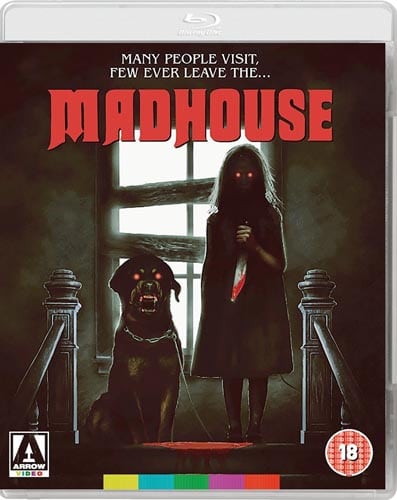
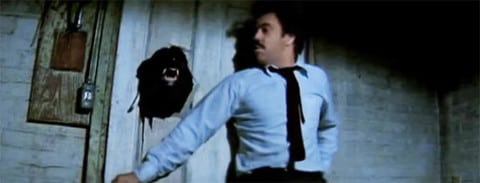
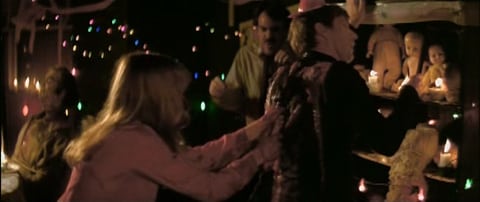

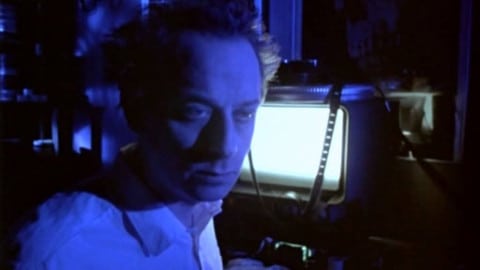
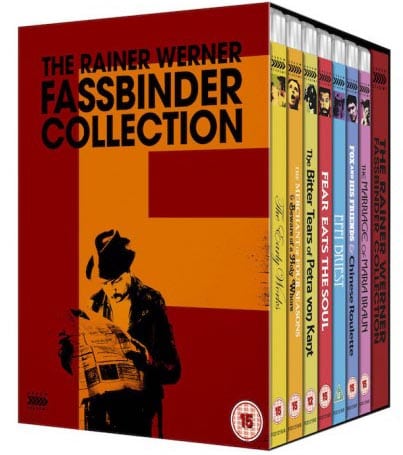

Be the first to comment